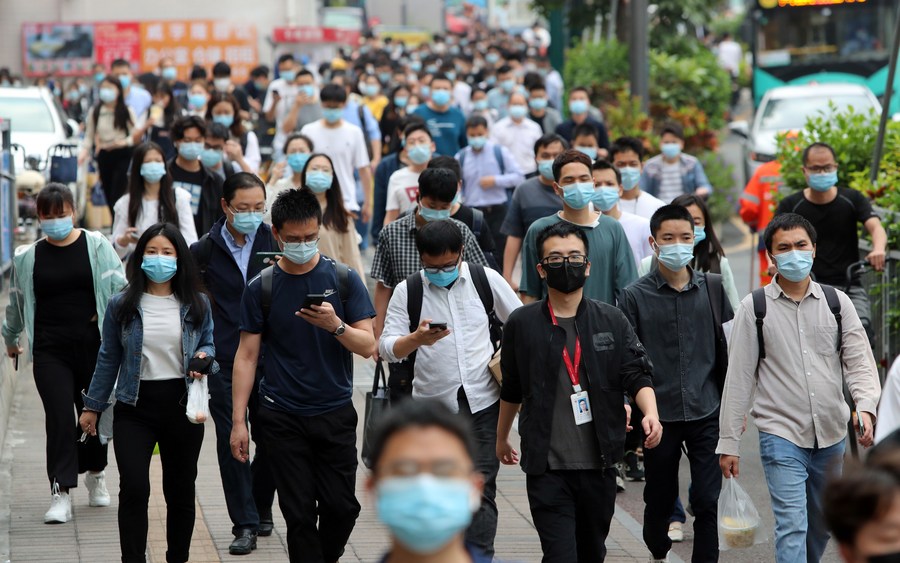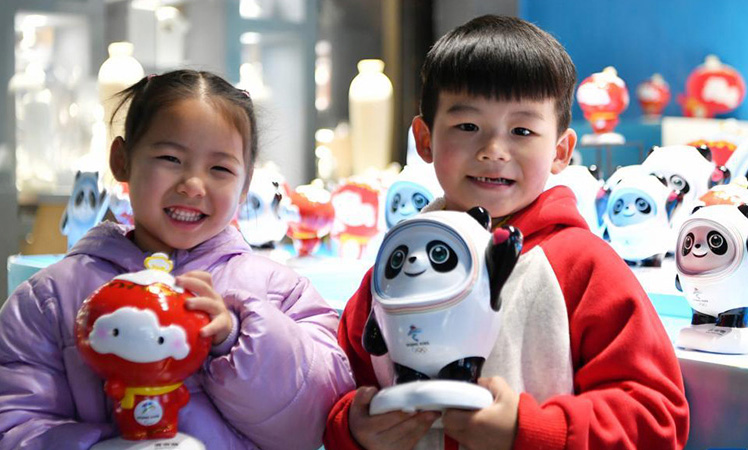Commentary: China's balance between epidemic control, economic development safeguards global supply chains

People are seen at a residential area under closed management in east China's Shanghai, March 23, 2022. (Xinhua/Fang Zhe)
BEIJING, March 24 (Xinhua) -- Amid the COVID-19 pandemic raging across the world, it is necessary for China to sustain the balance it has achieved between epidemic control and social and economic development, as this is crucial for stabilizing the world economy, particularly global supply chains.
The economic hub Shenzhen in south China swiftly restored normalcy after a recent resurgence in COVID-19 cases, thanks to the city's effective anti-epidemic response. This serves as the latest proof of China's efforts to secure global supply chains strained by the raging pandemic.
To combat case flare-ups, the city implemented differentiated epidemic control measures in factories to keep production stable. For instance, in Baoan District, which is home to many manufacturing plants, a working plan on coordinating epidemic control and economic and social development has been mapped out to enhance social mobilization.
As a major city in the manufacturing powerhouse Guangdong Province, Shenzhen plays a vital role in global supply chains, and its speedy return to normalcy is certainly beneficial for global consumers.

Citizens are on their way to work at an industrial park in Shenzhen, south China's Guangdong Province, March 21, 2022. (Photo by Li Weiwen/Xinhua)
Over the past two-plus years, China's dynamic zero-COVID policy, featuring swift response, mass screening and large-scale vaccination, has not only prevented mass deaths at home but also ensured that factories can deliver products ranging from face masks to Teslas to consumers worldwide.
In 2021, for example, China's foreign trade value exceeded 6 trillion U.S. dollars for the first time despite the epidemic continuing to weigh on global trade.
Had it not been for China's manufacturing capacity and continuous flow of commodities, shortages of goods would have bitten into essentials, nudging up retail prices in Walmart and Tesco stores and increasing inflation, thus impeding the already shaky global economic recovery.
While some ports and factories were inevitably impacted by temporary restrictions as a part of COVID-19 containment efforts, the industries across the country have remained remarkably unscathed.
The latest economic data has already demonstrated how China's economy, which posted stable growth of 8.1 percent amid the epidemic in 2021, began the year on a bright note. Several major indicators, such as retail sales of consumer goods and industrial output, have improved and beaten forecasts.
Thanks to effective epidemic prevention and control, people's lives and health are safeguarded, and China became the first major economy to achieve growth since the pandemic crippled the global economy.
China will remain steadfast in its commitment to such efforts, injecting more stability into the global economy and strengthening the global supply chain further.
Photos
 Increasingly more young adults in China register wills that include virtual assets
Increasingly more young adults in China register wills that include virtual assets Rapeseed flowers turn NW China's Luoping into picturesque spring wonderland
Rapeseed flowers turn NW China's Luoping into picturesque spring wonderland Why do people in China fall for animated characters like LinaBell and Bing Dwen Dwen?
Why do people in China fall for animated characters like LinaBell and Bing Dwen Dwen? Photo Album: architecture in Beijing merging history and modernity
Photo Album: architecture in Beijing merging history and modernity
Related Stories
- Residents take COVID-19 nucleic acid test in Changchun
- Some 300,000 flowers gifted to frontline workers in fight against recent COVID-19 surge
- Chinese mainland reports 2,010 new local COVID-19 cases
- Interview: Virus not to inevitably become milder, says British scientist
- HKSAR gov't urges higher vaccination of students as schools to reopen after Easter
Copyright © 2022 People's Daily Online. All Rights Reserved.






